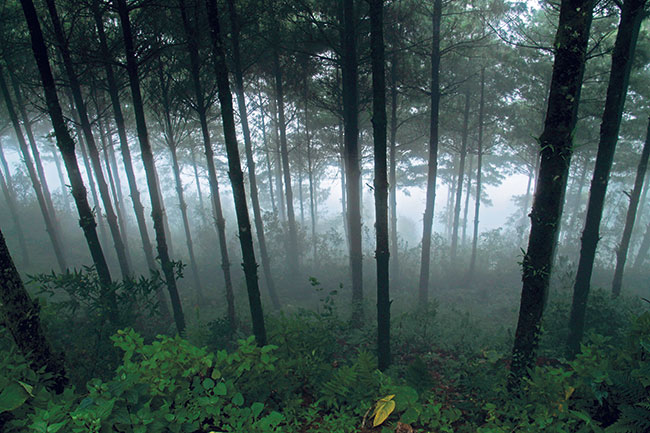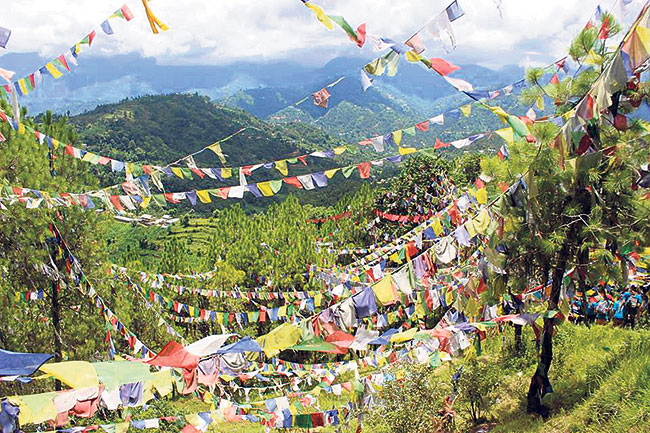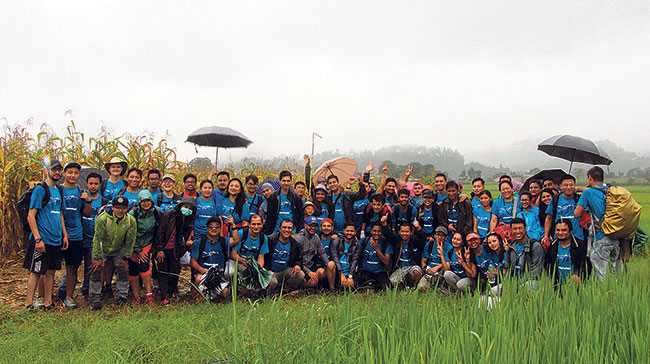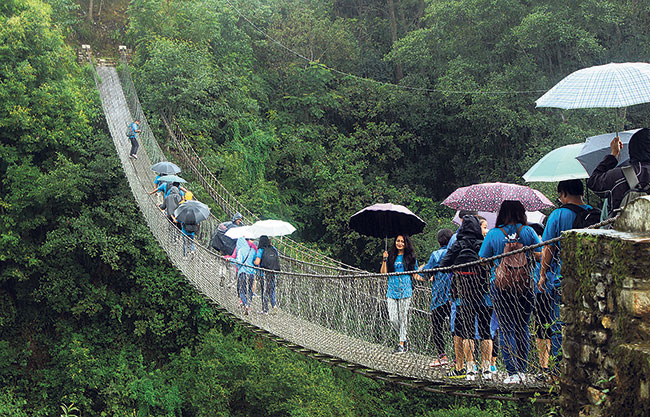'Chakka Panja' team and Paul Shah announce financial aid for daily wage film technicians
4 years ago
keyran8lama@gmail.com

KATHMANDU, July 18: Kathmandu is a bustling city comprising people from all walks of life. The abundance of population means that the serenity and the peace of the city are disrupted as the residents carry out their daily duties. It is evident that the life in the city can get anyone to plead for a quick escape from their monotonous routine. Luckily, amidst the chaos, Kathmandu also boasts places that provide natural solace. A quick hike at the outskirts of the valley can help eliminate all negativity and mental tiredness. Also, the hill-tops surrounding Kathmandu Valley flaunts a panoramic view of the mighty Himalayas.
However, bear in mind that hiking is not applicable during all seasons. Hiking in Kathmandu is most suitable during autumn (August to November), and spring (March to May). We’ve taken the challenge to persuade travel buffs to hike the slippery trails this monsoon, embracing the leech galore in the pathway.
Challenges in Monsoon
Monsoon starts from June and prolongs up to August. This is the season full of uncertainty. You can’t tell when the sunny day will go gloomy with dark clouds overhead. Furthermore, the unpredictability of downpour can easily disrupt your plans. In addition to the unpredictable rain and slippery trails, the blood-sucking leeches come in as a bonus.
Ghan Shyam Sharma, co-founders of Hike for Nepal, admits that monsoon is difficult compared to other seasons. “It is best that you avoid muddy routes, especially the red mud trails. In addition, leeches are common during monsoon. Some hikers panic as they have the ill reputation of clutching onto your skin.” Sharma told.
No mud, no lotus.
There are several benefits of hiking in monsoon. The view of farmers working in their lush paddy fields is worth every challenge. Also, watching the fog playing hide and seeks with the green alpines is another noteworthy experience.
Ram Devi Maharjan, the author of hiking Kathmandu, is captivated by the magic of hiking during monsoon. “I love to hike in monsoon. The activities of the farmer on their farm teach hikers about the hard work and the lifestyle of the farmers. Rainbow and rumbling waterfalls are also common during monsoon.”
Monsoon hiking tips
Since hiking in the monsoon is comparatively more challenging, hiker should be well prepared before heading out to their destination. While you’re preparing your backpack, be sure to include:
• Rain gears (Umbrella, raincoat, rain-proof jackets)
• Appropriate shoes
• Salt and Sancho to avoid leech
• First-aid kit
• At least two liters of water for each person
• Home-made food
Also, it is advisable to hike in a group of at least four. Before setting out on a hike, conduct a basic research of your destination.
Appropriate Hiking route
Hiking during monsoon, though treacherous, can be more memorable. However, make sure that your destination is culturally rich, and the forest is sparse. Also, avoid routes colonized by leeches. There are many suitable routes in the Kathmandu Valley. The most popular ones are:
- Baghdwar-Okhreni- Sundarijal Circuit Hike
- Namo Buddha - Balthali Circuit Hike
- Sundarijal-Mulkharka Bhajyang Circuit Hike
- Lankuri Bhanjyang-Ranikot Hike
- Nagarkot-Dhulikhel Hike
Benefits of Hiking
Hiking mainly exercises your cardiovascular muscles. It is a great workout for the entire body. With each step, all your lower body's biggest muscles function. If you use trekking poles and/or carry heavier backpacks, you force additional muscle engagement. Hiking on an incline causes your muscles to fire up and get stronger. Your core muscles are engaged, especially while going downhill on a steep slope with a backpack strapped around your body. It’s not just the legs, hiking brings better sleep.

- Dr Prakash Banjade, Medical Officer






Leave A Comment